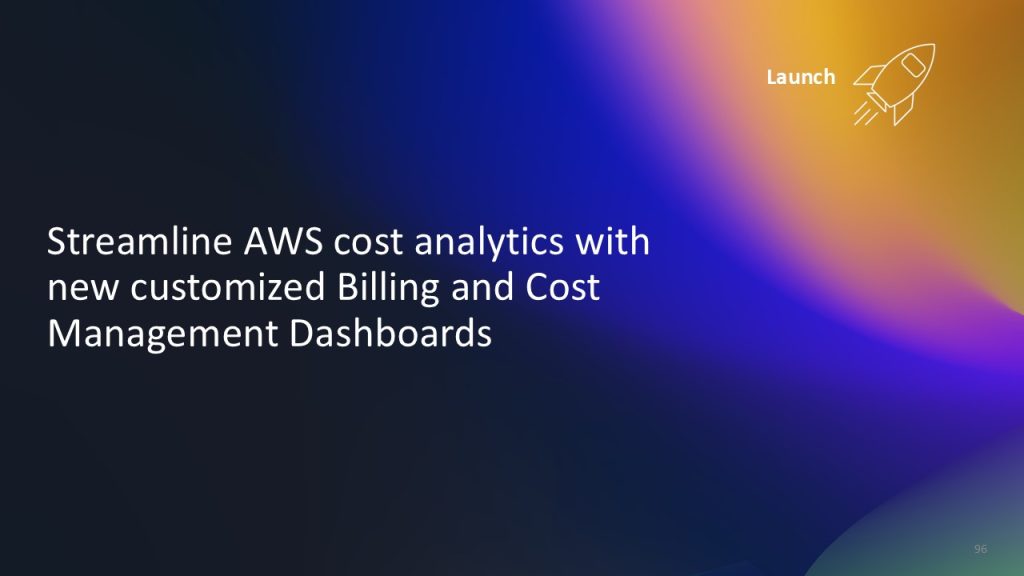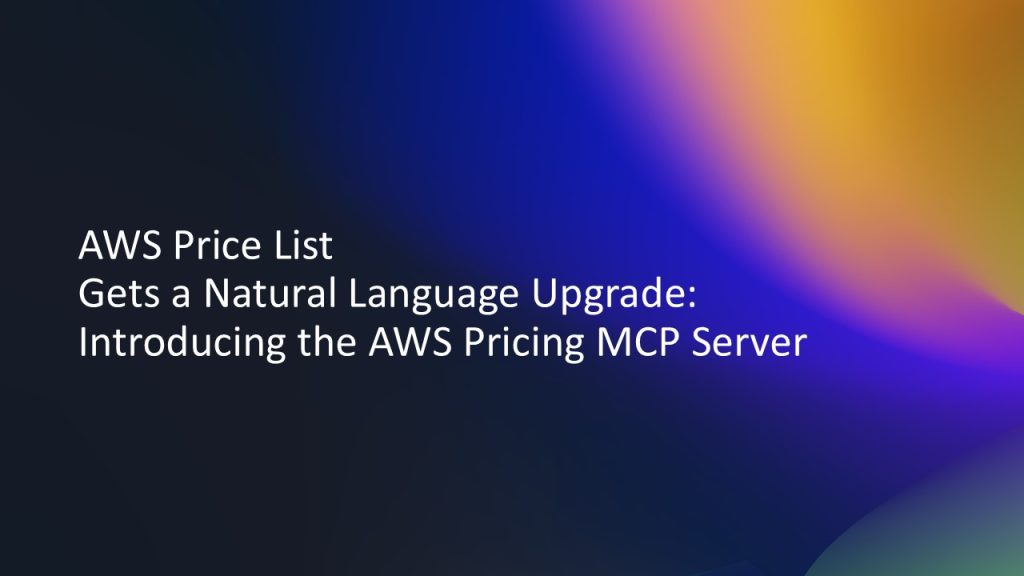AWS Cloud Financial Management
Improve cost visibility of Machine Learning workloads on Amazon EKS with AWS Split Cost Allocation Data
We are excited to introduce split cost allocation support for accelerated workloads in Amazon Elastic Kubernetes Service (EKS). This enhancement to Split Cost Allocation Data for EKS enables customers to track container-level resource costs for accelerator-powered workloads. Split Cost Allocation Data now utilizes Trainium, Inferentia, NVIDIA and AMD GPUs, complementing existing CPU and memory cost tracking capabilities. This cost data is available in the AWS Cost and Usage Report (legacy and CUR 2.0), providing organizations with a consolidated view of their cloud expenditures. This feature is now available across all AWS commercial regions (excluding China regions) at no additional cost to customers.
AWS Announces Billing and Cost Management MCP Server
Introduction Unlocking FinOps capabilities for modern cloud teams just got simpler with the introduction of the AWS Billing and Cost Management Model Context Protocol (MCP) server, which makes advanced cost analysis and optimization features directly available to your favorite AI assistant or chatbot. By integrating natural language queries, secure local credentials, and real-time access to […]
Streamline AWS cost analytics with new customized Billing and Cost Management Dashboards
Today, we’re excited to announce the general availability of Billing and Cost Management Dashboards, a new feature within AWS Billing and Cost Management that allows you to display multiple views of billing and cost data in a single page. With Billing and Cost Management Dashboards, you can create customized views combining data from AWS Cost Explorer and commitment coverage and utilization, helping you discover spending patterns and correlations to make data-driven financial decisions. You can also share your dashboards across accounts, enabling your FinOps teams to establish common cost reporting practices throughout their organization.
Understanding AWS Savings Plan Recommendations: Payer vs. Linked Account Views
Savings Plans offer a flexible pricing model that provides you up to 72% savings on your AWS compute workload compared to on-demand prices. When your AWS footprint grows through organic expansion, regional scaling, mergers, acquisitions, or setting up AWS Organizations to align with your business requirements, understanding how the recommendations are made at payer and linked account levels helps you manage Savings Plans at scale. If you are managing a multi-account AWS Organization, you might have noticed that Savings Plan recommendations differ between your payer account (also known as management account) and linked account (also known as member account).
Simplify Departmental Cost Allocation with AWS Organizations and Lambda
In this blog, we’ll explore a straightforward, automated approach to departmental cost allocation using AWS Organizations and AWS Lambda. The solution eliminates manual tracking and gives you clear visibility into departmental spending.
AWS Price List Gets a Natural Language Upgrade: Introducing the AWS Pricing MCP Server
We are excited to release the aws-pricing-mcp-server, an open-source tool in the AWS Labs GitHub repository, that brings natural language pricing queries to your favorite AI assistants through the Model Context Protocol (MCP). Now you can simply ask “What would it cost to run three m5.large instances and a MySQL RDS database in us-west-2?” and get instant pricing answers using natural language queries without leaving your workflow.
Automating Budget Management Across Multi-Account Environments
Managing AWS spending across multiple accounts demands a sophisticated approach to budget control and monitoring. Our custom solution enables centralized budget management with automated email notifications, allowing organizations to set and enforce account-specific budgets from a central management account. This automated system tracks spending across individual accounts and delivers timely alerts when accounts approach or exceed their allocated budgets. The central management account serves as a single source of truth, where finance teams can configure unique budget thresholds for each account and receive notifications about spending patterns across accounts in the entire organization.
How to Set Up Automated Alerts for Newly Purchased AWS Savings Plans
As organizations expand, FinOps teams require a comprehensive overview of AWS Savings Plans commitments to maximize utilization efficiency. This solution involves implementing monitoring systems and automated alerts to identify underutilized Savings Plans within the eligible return period. In this blog post, we provide AWS CloudFormation templates that create AWS Step Functions state machine, Amazon Simple Notification Service (SNS) topic, Amazon EventBridge scheduler, and necessary AWS Identity and Access Management (IAM) roles to automate the monitoring of newly purchased Savings Plans and highlight those that are underutilized.
Navigating GPU Challenges: Cost Optimizing AI Workloads on AWS
Navigating GPU resource constraints requires a multi-faceted approach spanning procurement strategies, leveraging AWS AI accelerators, exploring alternative compute options, utilizing managed services like SageMaker, and implementing best practices for GPU sharing, containerization, monitoring, and cost governance. By adopting these techniques holistically, organizations can efficiently and cost-effectively execute AI, ML, and GenAI workloads on AWS, even amidst GPU scarcity. Importantly, these optimization strategies will remain valuable long after GPU supply chains recover, as they establish foundational practices for sustainable AI infrastructure that maximizes performance while controlling costs—an enduring priority for organizations scaling their AI initiatives into the future.
Optimizing cost for deploying Amazon Q
Building on our previous discussions about AWS generative AI cost optimization, the fourth blog of the five-part blog series focuses on maximizing value from Amazon Q, AWS’s generative AI-powered assistant. While our earlier posts covered custom model development with Amazon EC2 and SageMaker AI and foundation models with Amazon Bedrock, today we’ll explore strategies to optimize costs when implementing Amazon Q. From selecting the right pricing tier and implementing strategic user management to optimizing content indexing and improving cost predictability, we’ll share practical approaches that help you balance functionality with cost efficiency. Whether you’re using Amazon Q Business for your generative AI–powered assistant or Amazon Q Developer to enhance developer productivity, these best practices will help you make informed decisions about your Q implementation.









